Caracal
- February 16, 2024
- 0 comment
The caracal, also known as the desert lynx, is a fascinating species of wild cat found primarily in Africa, the Middle East, and parts of Asia. Renowned for its striking appearance and exceptional hunting abilities, the caracal is a medium-sized feline characterized by its short, dense fur and distinctive tufts of black hair on its ears. It inhabits a variety of environments, including savannas, scrublands, and semi-deserts, where it employs stealth and agility to prey on small to medium-sized mammals, birds, and occasionally larger prey such as antelopes.

Despite being solitary by nature, caracals play an important role in their ecosystems and hold cultural significance in various societies, featuring prominently in folklore and mythology. However, like many other wild species, caracals face threats from habitat loss, human encroachment, and poaching, highlighting the need for conservation efforts to ensure their continued survival in the wild.
| Specifications | Description |
|---|---|
| Scientific Name | Caracal caracal |
| Common Name | Caracal, Desert Lynx |
| Average Weight | 8 to 19 kilograms (18 to 42 pounds) |
| Average Length | 40 to 50 centimeters (16 to 20 inches) at the shoulder |
| Fur Color | Reddish-brown to tawny with distinctive black tufts on the ears |
| Habitat | Savannas, scrublands, woodlands, semi-deserts |
| Geographic Range | Africa, Middle East, parts of Asia |
| Diet | Small to medium-sized mammals, birds, reptiles, insects |
| Predatory Behavior | Stealthy and agile, ambushes prey with exceptional speed and leaping ability |
| Social Structure | Largely solitary, establishes territories marked with scent markings and vocalizations |
| Reproduction | Mating occurs during cooler months, gestation period of about two to three months |
| Lifespan | Typically 10 to 12 years in the wild |
| Conservation Status | Listed as a species of least concern on the IUCN Red List, localized populations at risk |
The Elusive Desert Cat
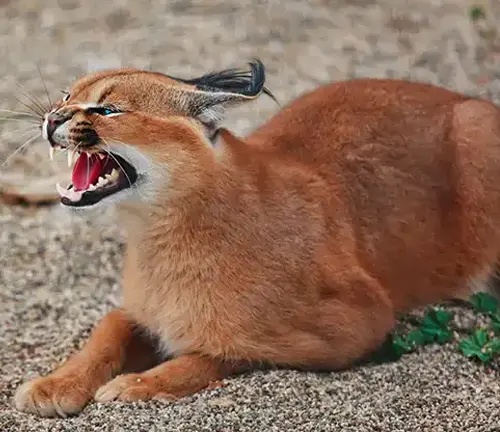
Caracal, scientifically known as Caracal caracal, is a fascinating species of wild cat found predominantly in Africa, the Middle East, and parts of Asia. Renowned for its distinctive appearance and remarkable hunting abilities, the caracal is often referred to as the “desert lynx” due to its resemblance to the larger Eurasian lynx. Let’s delve deeper into the world of the caracal to uncover its secrets and significance.
Physical Characteristics
Size and Weight
The size and weight of a caracal can vary depending on factors such as age, sex, and geographic location. On average, adult caracals typically weigh between 8 to 19 kilograms (18 to 42 pounds). They stand at about 40 to 50 centimeters (16 to 20 inches) at the shoulder, with males generally being slightly larger than females. These measurements make caracals medium-sized cats, striking a balance between agility and strength, which is essential for their hunting prowess in the wild.
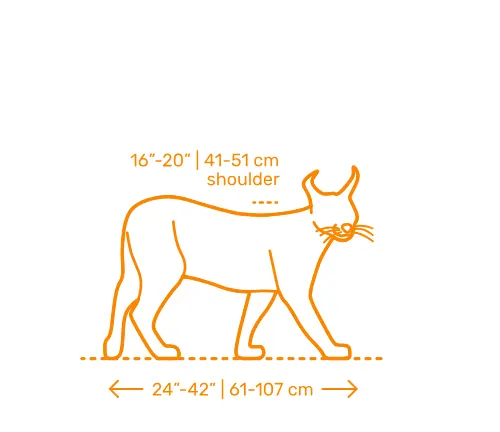

Fur and Coat
The fur and coat of a caracal are distinctive features that contribute to its striking appearance. Caracals have short, dense fur that varies in color from reddish-brown to tawny. One of the most notable characteristics of their coat is the presence of tufts of black hair on their ears, which are often referred to as “ear tufts” or “ear furnishings.” These tufts not only add to their aesthetic appeal but also serve practical purposes, such as providing camouflage in their natural habitat and possibly aiding in communication. Additionally, caracals have a white underside, and their fur may have faint spots or markings, although these are less prominent compared to other wild cat species. Overall, the fur and coat of a caracal are well-suited to its environment, providing both insulation and camouflage while maintaining its agility and grace.
Habitat and Distribution
Geographic Range
The geographic range of caracals spans across various regions of Africa, the Middle East, and parts of Asia. In Africa, they are found in a wide range of habitats, including savannas, scrublands, woodlands, and semi-deserts, covering areas from the southern tip of the continent to the Sahel region. In the Middle East, caracals are present in countries such as Iran, Iraq, and Saudi Arabia, where they inhabit arid and semi-arid environments. Additionally, they are also found in parts of Central Asia, including Turkmenistan, Uzbekistan, and Tajikistan. Caracals are adaptable animals capable of thriving in diverse landscapes, from desolate deserts to dense woodlands, making them one of the most widespread wild cat species in their range.

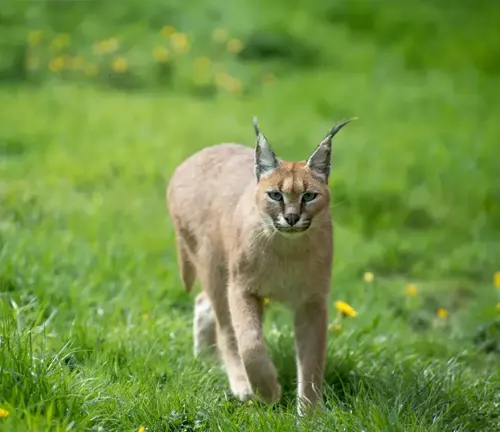
Preferred Habitats
Their preferred habitats include savannas, scrublands, woodlands, and semi-deserts, where they can find suitable cover for stalking prey while still having open areas for hunting. These habitats provide caracals with the necessary resources for survival, including access to prey species and shelter for denning. However, they generally avoid dense forests and areas with thick vegetation, as these environments may hinder their hunting abilities. Overall, caracals exhibit a remarkable ability to thrive in diverse habitats, demonstrating their adaptability and resilience in the wild.
Behavior and Lifestyle
Hunting Techniques
Caracals are highly skilled hunters known for their remarkable hunting techniques. They employ a combination of stealth, speed, and agility to capture prey effectively. One of their primary hunting techniques is stalking, where they stealthily approach their prey, taking advantage of cover and terrain to remain undetected. Caracals are also adept at ambushing their prey, using their powerful hind legs to launch sudden and precise attacks. Their exceptional leaping ability allows them to pounce on unsuspecting prey from a distance, often catching them by surprise. Additionally, caracals are known to use strategic positioning to corner their prey or drive them towards a predetermined location, increasing their chances of a successful hunt. Overall, their hunting techniques showcase their prowess as skilled predators, enabling them to thrive in their natural habitats.
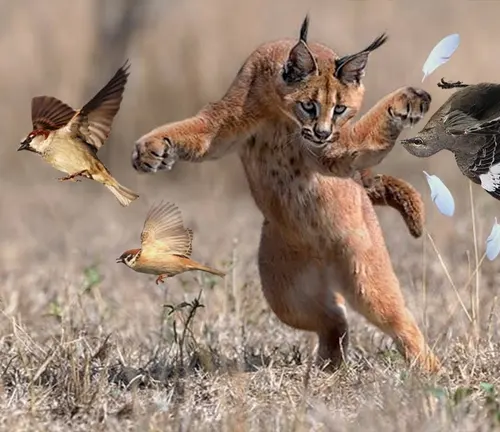
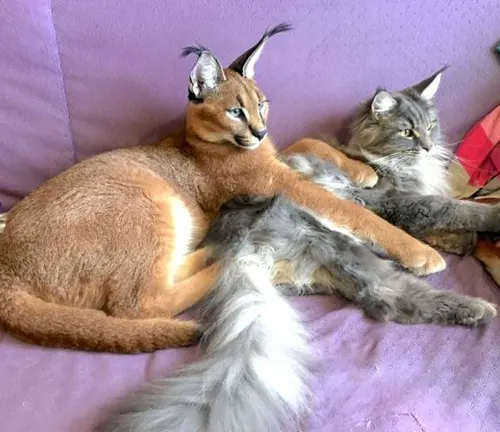
Social Structure
Caracals are largely solitary animals, exhibiting minimal social structure outside of mating and raising offspring. They establish and defend territories, typically marked with scent markings and vocalizations, to deter potential rivals and maintain exclusive access to resources such as food and shelter. While they may tolerate the presence of other caracals within their territories, interactions between individuals are generally limited and often aggressive, especially between males competing for mating opportunities. Outside of the breeding season, caracals typically lead solitary lives, hunting and patrolling their territories independently. However, during the mating season, males may actively seek out receptive females, engaging in brief courtship rituals before mating occurs. After mating, the male’s involvement in parenting is minimal, and females are primarily responsible for raising and nurturing the offspring. Overall, the social structure of caracals is characterized by territorial behavior and solitary lifestyles, with limited interaction between individuals outside of the breeding season.
Diet and Feeding Habits
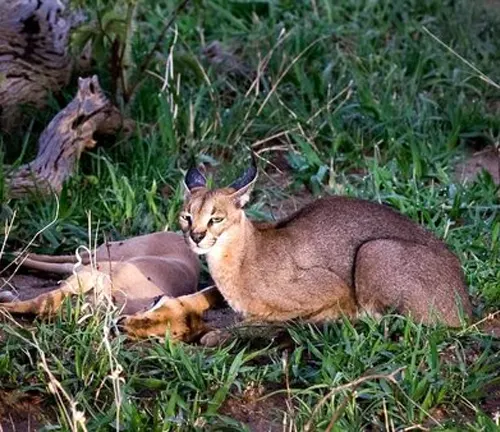

Caracals are carnivorous predators with a diverse diet that primarily consists of small to medium-sized mammals, birds, and occasionally reptiles and insects. They are opportunistic hunters, meaning they adapt their diet based on the availability of prey in their environment. Small mammals such as rodents and hares are staple foods for caracals, providing them with essential nutrients and energy. Additionally, caracals are skilled hunters of birds, using their agility and speed to capture prey both on the ground and in mid-air. They may also prey on reptiles such as lizards and snakes, as well as insects and other invertebrates when larger prey is scarce. Caracals are known to hunt primarily during dawn and dusk, utilizing their keen senses of sight and hearing to locate and ambush prey effectively. After capturing their prey, they consume it on-site or may carry it to a secluded location to feed in peace. Overall, caracals exhibit a versatile and adaptable feeding behavior, allowing them to exploit a wide range of prey species to meet their dietary needs.
Reproduction and Life Cycle
Mating Behavior
Mating behavior in caracals is characterized by a combination of courtship rituals and territorial displays. During the breeding season, which typically occurs during the cooler months, male caracals actively seek out receptive females to mate with. They may engage in vocalizations, scent marking, and visual displays to attract females and establish dominance over rival males. Courtship rituals often involve behaviors such as chasing, grooming, and rubbing against each other, allowing potential mates to assess each other’s suitability for breeding. Once mating occurs, the male may continue to patrol and defend his territory, ensuring exclusive access to the female and protecting her from potential threats. After mating, the female undergoes a gestation period of about two to three months before giving birth to a litter of usually one to six kittens. Overall, mating behavior in caracals is influenced by both hormonal cues and social dynamics, with males competing for access to females and females selecting mates based on factors such as dominance, health, and genetic compatibility.

Gestation Period
The gestation period for caracals, which refers to the time between conception and birth, typically lasts approximately two to three months. During this period, the female caracal carries her developing embryos or fetuses in her womb, providing them with nourishment and protection until they are ready to be born. The exact duration of the gestation period may vary slightly depending on factors such as environmental conditions and the health of the mother. Towards the end of the gestation period, the female caracal will seek out a suitable den or sheltered area where she can give birth to her offspring in safety and seclusion. After giving birth, the mother will care for and nurse her kittens until they are old enough to venture out into the world and begin learning to hunt and fend for themselves. Overall, the gestation period is a critical stage in the reproductive cycle of caracals, ensuring the healthy development and survival of their offspring.

Development of Kittens
The development of caracal kittens is a fascinating process that involves rapid growth and learning under the guidance of their mother. After birth, caracal kittens are born blind and helpless, relying entirely on their mother for warmth, nourishment, and protection. Over the first few weeks of life, the kittens’ eyes gradually open, allowing them to see their surroundings and begin to explore their den. During this time, the mother provides milk for her offspring, ensuring they receive essential nutrients for healthy growth and development.
Threats and Conservation Status
The caracal faces several threats in the wild, which impact its conservation status. Habitat loss and fragmentation due to human activities such as agriculture, urbanization, and infrastructure development pose significant threats to caracal populations. As their natural habitats shrink, caracals face increased competition for resources and encounters with humans, leading to conflicts and potentially lethal consequences.
Interactions with Humans
Cultural Significance
Caracals hold cultural significance in various societies around the world, featuring prominently in folklore, mythology, and traditional rituals. In some cultures, caracals are revered for their grace, beauty, and hunting prowess, symbolizing qualities such as strength, agility, and independence.
Economic Impact
The economic impact of caracals can vary depending on the context and location. In some regions, caracals may have a positive economic impact through ecotourism, as they attract wildlife enthusiasts and photographers who are willing to pay for guided tours and accommodations to observe these elusive predators in their natural habitats. This can generate revenue for local communities and support conservation efforts aimed at protecting caracal populations and their habitats.

Different Species
The caracal, scientifically known as Caracal caracal, is a single species within the genus Caracal. There are no recognized subspecies of caracal, meaning that there is only one species of caracal worldwide.
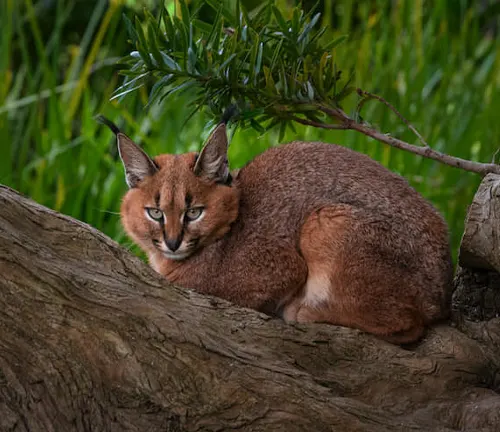
Frequently Asked Question (FAQs)
- Are caracals dangerous to humans?
Caracals are generally not considered dangerous to humans. They typically avoid interactions with humans and pose little threat to human safety. - What do caracals eat?
Caracals are carnivorous predators that primarily feed on small to medium-sized mammals such as rodents, hares, and birds. They may also prey on reptiles, insects, and occasionally larger animals such as antelopes. - How fast can a caracal run?
Caracals are incredibly fast and agile animals, capable of reaching speeds of up to 50 miles per hour (80 kilometers per hour) in short bursts. - Where do caracals live?
Caracals inhabit a wide range of habitats, including savannas, scrublands, woodlands, and semi-deserts. They are found across various regions of Africa, the Middle East, and parts of Asia. - Are caracals endangered?
Caracals are currently listed as a species of least concern on the IUCN Red List, indicating that they are not facing imminent extinction. However, localized populations may be at risk due to habitat loss and other threats. - Do caracals make good pets?
While some people may be tempted to keep caracals as exotic pets, they are wild animals and require specialized care and environment. Keeping them as pets is often illegal and unethical, as they belong in their natural habitats. - How do caracals communicate?
Caracals communicate through a variety of vocalizations, including growls, hisses, and meows. They also use scent markings and body language to communicate with other individuals. - What is the lifespan of a caracal?
In the wild, caracals typically live for about 10 to 12 years, although they may live longer in captivity with proper care and nutrition. - How do caracals hunt?
Caracals are skilled hunters that use stealth and agility to ambush their prey. They rely on their keen senses of sight and hearing to locate prey, and then use their powerful legs to pounce and capture it. - Do caracals have any natural predators?
While caracals are apex predators in their ecosystems, they may face threats from larger predators such as lions, hyenas, and leopards, particularly when they are young or injured. - Can caracals be domesticated?
While some individuals have attempted to domesticate caracals, they are wild animals and retain their natural instincts. Domestication is generally not recommended or feasible, as caracals require vast amounts of space and specialized care.




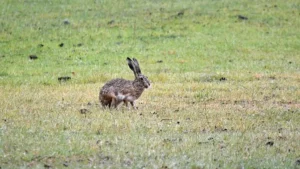



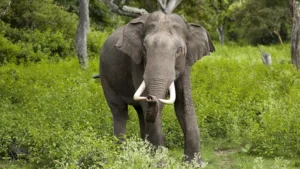

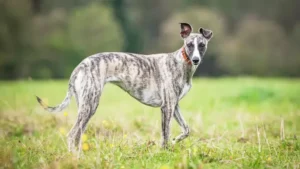
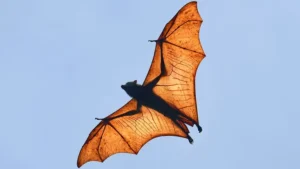
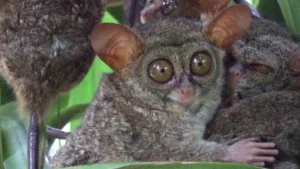

Leave your comment